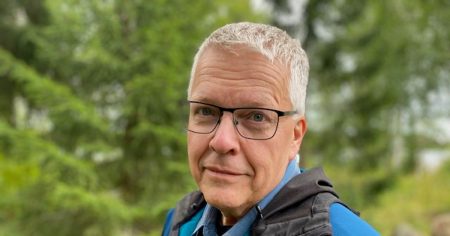Swedish Prime Minister Ulf Kristersson’s visit to Austria to discuss migration with Chancellor Karl Nehammer underscores the growing European concern over the efficacy of current asylum systems and the rising number of rejected asylum seekers who remain within the EU. Kristersson advocates for the establishment of ”return hubs” – centers located outside the EU where individuals denied asylum can be housed pending deportation. This initiative, he argues, reinforces the distinction between accepted and rejected asylum claims, thereby discouraging unfounded applications and bolstering the credibility of the asylum process. The current situation, where only a small percentage of rejected applicants actually leave the EU, undermines the system and fosters a climate of illegal immigration, creating further societal challenges.
The central issue driving the push for return hubs is the ineffectiveness of existing mechanisms for repatriating those denied asylum. EU data indicates that the vast majority of rejected applicants remain within the union, either by disappearing into the informal economy or by exploiting legal loopholes. This not only strains resources but also diminishes the perceived legitimacy of asylum procedures, encouraging further irregular migration. Kristersson contends that if existing rules prove insufficient, they must be adapted to address this reality. He cites Italy’s agreement with Albania as a potential model for how such hubs could function, suggesting that safe third countries could play a crucial role in managing the flow of rejected asylum seekers. The underlying principle, he emphasizes, is that there is no inherent right to choose one’s destination country, and asylum decisions must be respected.
While the concept of return hubs has gained traction among some EU members, significant obstacles remain. Kristersson acknowledges the complexities involved, hinting at potential legal and logistical hurdles that need to be resolved before concrete implementation can occur. The EU Commission’s formal proposal for such hubs is anticipated, but its timeline remains uncertain. Furthermore, organizations like Amnesty International have voiced strong opposition, arguing that the concept violates both EU and international law, raising concerns about the potential human rights implications of housing rejected asylum seekers in third-country facilities. These legal and ethical considerations present significant challenges to the realization of the return hub strategy.
Kristersson highlights Sweden’s success in reducing asylum reception to its lowest level since 1996, attributing this achievement to a significant overhaul of its migration policies. He contrasts the current projected intake of around 10,000 asylum seekers in 2024 with the over 162,000 refugees who arrived during the 2015 migration crisis, largely driven by the Syrian conflict. While the EU’s border closures in 2016 played a significant role in stemming the flow of migrants, Kristersson credits Sweden’s policy adjustments for the sustained reduction in asylum applications. He argues that this demonstrates the effectiveness of stricter migration controls in managing asylum flows.
However, it’s crucial to acknowledge that the reduced numbers are not solely attributable to Sweden’s policy shift. Shifting migration routes and other external factors have also influenced the decline in asylum applications. Many of the planned legislative changes under the government’s ”paradigm shift” have not yet been fully implemented, making it difficult to definitively assess their long-term impact. The decreased number of arrivals may be a combination of various factors, and the specific contribution of Sweden’s policy changes remains to be seen.
In conclusion, Kristersson’s visit to Austria and his advocacy for return hubs reflect a broader European struggle to balance humanitarian obligations with the practicalities of managing migration flows. The proposal aims to strengthen the integrity of the asylum system by ensuring that rejected applicants are repatriated, thus deterring unfounded claims and managing expectations. However, significant hurdles remain, including legal challenges, ethical concerns, and logistical complexities. The success of this initiative depends on navigating these challenges while upholding international law and protecting the rights of all individuals, regardless of their migration status. Furthermore, a comprehensive understanding of the various factors influencing migration patterns is essential for developing effective and sustainable migration policies.














